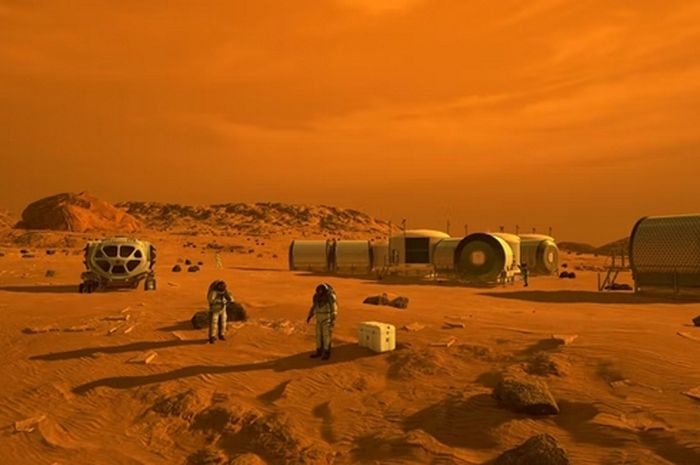Nationalgeographic.co.id—An international research team has discovered a plasma-based way to produce and separate oxygen in the Martian environment. This is a complementary approach to NASA’s Mars In-Situ Oxygen Resource Utilization Experiment, or MOXIE. Which can produce a high rate of molecular production per kilogram of instrumentation sent into space.
Such systems could play an important role in the development of life support systems on the planet Mars. Raw materials as well as basic chemicals needed to process fuels, building materials, and fertilizers.
In Journal of Applied Physics, from AIP Publishing, a team from the University of Lisbon, Massachusetts Institute of Technology, Sorbonne University, Eindhoven University of Technology, and the Dutch Institute for Fundamental Energy Research presented this method. According to them, this method can be used to utilize and process local resources. Mainly to produce products on Mars. Their findings were published on August 16 under the title Plasmas for in situ resource utilization on Mars: Fuels, life support, and agriculture.
The natural conditions on the red planet are almost ideal for the utilization of in situ resources by plasma. Since the atmosphere is mainly composed of carbon dioxide which can be broken down to produce oxygen and the pressure is favorable for plasma ignition.
Vasco Guerra, a University of Lisbon physicist who authored the study, says that creating and accelerating electron beams is much easier on Mars. Where the air is about 100 times thinner than Earth. “There is an ideal pressure for plasma surgery,” he said. “Mars has this exact pressure.”
However, according to him, there are two major obstacles that hinder the production of oxygen on Mars.
“First, the decomposition of carbon dioxide molecules to extract oxygen. This is a very difficult molecule to break down,” Guerra said. “Second, the separation of oxygen resulting from a gas mixture that also contains, for example, carbon dioxide and carbon monoxide. We look at these two steps holistically to complete both challenges at the same time. This is where plasma can help.”
Plasma is the fourth natural state of matter, and contains freely charged particles such as electrons and ions. Electrons are light and easily accelerated to very high energies by electric fields.
“When electrons like bullets collide with carbon dioxide molecules, they can either instantly decompose them or transfer energy to make them vibrate,” Guerra said.
“This energy can be channeled, largely into the decomposition of carbon dioxide. Together with our colleagues in France and the Netherlands, we experimentally demonstrated the validity of these theories. In addition, the heat generated in the plasma is also beneficial for the separation of oxygen from oxygen. .”
Oxygen is the key to creating a breathable environment. As well as a starting point for producing fuel and fertilizer for future Martian agriculture. Local fuel production will be important for future missions. All of them are important for future human settlement on Mars.
By separating carbon dioxide molecules to produce green fuels and recycled chemicals. Then plasma technology can also help in tackling climate change.
Michael Hecht, an experimental scientist at the Massachusetts Institute of Technology, also noted that the plasma device would need a portable power source and a place to store the oxygen it provides. But he also said the approach could be developed to avoid bulk with the right investments. “There’s nothing wrong with the plasma technique other than that it’s much more mature,” he said.
